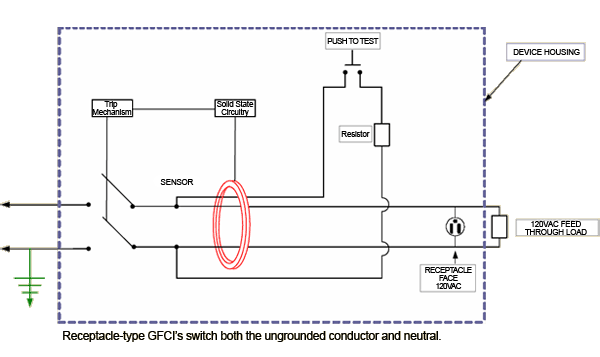K8MHZ
Senior Member
- Occupation
- Electrician
I don't know all of the nuance of GFCI's but I just couldn't accept what you were saying about the test switch. I quick search of Google turned up this site from Pass and Seymour that disputes your premise. http://tools.passandseymour.com/ProductKnowledge/course.cfm?course_sak=42&cur_page=0&cur_seq=0
Perhaps the older style GFCI's operated the way you describe, but the newer ones automatically open when power is removed. The Fed Govt guidelines for installation tell you to push the button and if the unit doesn't operate it is WIRED wrong. The test button clearly provides an actual fault condition to test the GFCI.
That's the circuit I was looking for. Thanks. As I suspected, the resistor should be visible to a meter when in circuit.
Some testing is in order. And perhaps a dissection.
If there are different types of test operation, that would be good to know.


